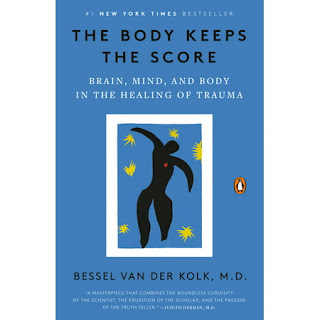The Ultimate Ways to Rank on Search Engines: A Comprehensive Guide
The battle for the top spots on search engine results pages (SERPs) is fiercer than ever. With millions of websites competing for users' attention, it is crucial to understand and implement the most effective strategies for ranking higher on search engines like Google, Bing, and Yahoo. This comprehensive guide outlines the ultimate ways to rank on search engines, along with descriptions and links to help you achieve success.
Optimize for Keywords
Keyword optimization is a crucial part of any SEO strategy. Start by conducting thorough keyword research to identify the most relevant and high-traffic search terms for your niche. Tools like Google's Keyword Planner (https://ads.google.com/home/tools/keyword-planner/) and Moz's Keyword Explorer (https://moz.com/explorer) can help you find the best keywords for your content.
Create High-Quality, Engaging Content
Publishing engaging, high-quality content is essential for ranking well on search engines. Focus on creating content that provides value to your target audience, answers their questions, and solves their problems. Be sure to keep your content fresh and up-to-date, as search engines prioritize recent and relevant information.
Improve On-Page SEO
On-page SEO refers to optimizing individual web pages to rank higher in search results. Optimize your title tags, meta descriptions, and header tags to include your target keywords. Additionally, structure your content with proper headings, and use relevant images with descriptive alt tags. Moz's On-Page SEO guide (https://moz.com/learn/seo/on-page-factors) offers an in-depth look at how to improve your on-page SEO.
Enhance Your Website's Technical SEO
Technical SEO encompasses the aspects of your website that affect its performance and accessibility. Improving site speed, optimizing for mobile devices, and ensuring a secure browsing experience (using HTTPS) are all essential for better search rankings. Google's Lighthouse tool (https://developers.google.com/web/tools/lighthouse/) can help you evaluate and improve your website's technical performance.
Build High-Quality Backlinks
Backlinks, or inbound links from other websites, are a significant factor in search engine rankings. Focus on building high-quality backlinks from reputable, authoritative websites. Guest posting, broken link building, and creating shareable content are just a few methods for acquiring valuable backlinks. Ahrefs' guide on link building (https://ahrefs.com/blog/link-building/) provides a comprehensive overview of effective strategies.
Optimize for Local SEO
For businesses targeting a local audience, optimizing for local SEO is essential. Claim your Google My Business listing (https://www.google.com/business/) and ensure your business information is accurate and up-to-date. Encourage customers to leave reviews, and optimize your website with local keywords and location-specific content.
Leverage Social Media
While social media signals are not direct ranking factors, they can significantly impact your website's visibility and traffic. Share your content on relevant social media platforms and engage with your target audience. Social shares can lead to more backlinks and increased brand visibility, ultimately helping to improve your search rankings.
Monitor and Analyze Your Performance
Keep track of your website's performance using analytics tools like Google Analytics (https://analytics.google.com/) and Google Search Console (https://search.google.com/search-console/). Regularly analyze your website's traffic, user engagement, and search rankings to identify areas for improvement and optimize your SEO strategy.
Focus on User Experience (UX)
A great user experience is essential for retaining visitors and boosting your search engine rankings. Ensure that your website is easy to navigate, with a clear structure and intuitive design. Additionally, make sure your content is easily readable with proper formatting and an accessible font size. Google's Core Web Vitals (https://web.dev/vitals/) offer guidelines for improving your website's UX and performance.
Optimize for Voice Search
As voice search becomes increasingly popular, it's essential to optimize your website to rank well for voice queries. Use conversational language and long-tail keywords in your content, as voice searches tend to be more specific and question-based. Structured data markup (https://schema.org/) can also help search engines understand your content better and improve its visibility in voice search results.
Utilize Video Content
Video content is highly engaging and can help you rank higher in search results. Create informative and entertaining videos related to your niche and optimize them with relevant keywords in the title, description, and tags. Uploading your videos to platforms like YouTube (https://www.youtube.com/) can also help drive additional traffic to your website.
Implement Schema Markup
Schema markup is a form of structured data that helps search engines understand your content more effectively. By implementing schema markup, you can enhance the way your content is displayed in search results, potentially boosting click-through rates and rankings. Google's Structured Data Markup Helper (https://www.google.com/webmasters/markup-helper/) is a useful tool for implementing schema markup on your website.
Ranking high on search engines is a multifaceted process that requires consistent effort and adaptation to changing trends. By focusing on keyword optimization, content quality, technical SEO, user experience, and other essential factors, you can steadily improve your search rankings and gain a competitive edge. Keep up-to-date with the latest developments in SEO and be prepared to adjust your strategies as necessary to maintain your website's visibility and online success.










![LEGO Star Wars: Slave I - 1996 Piece Building Kit [LEGO, #75060, Ages 14+]](https://i5.walmartimages.com/asr/db14e6e4-e286-43b7-8eea-3f07ad92732a.5090d76c7f277c1a3926f475e25758f3.jpeg?odnWidth=282&odnHeight=376&odnBg=FFFFFF)



.jpeg)
.jpeg)